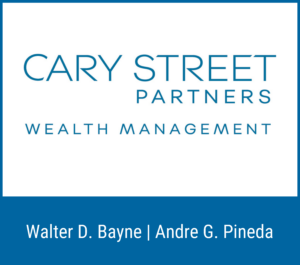Though wages for the lowest-paid jobs have risen across the country at the fastest rate in four decades, the number of households struggling to get by in Virginia has increased by 87,443 from 2021 to 2022, according to an update from Rappahannock United Way and research partner United for ALICE.
As a result, 1.3 million households, or 40% were living paycheck to paycheck. That calculation includes the 359,347 households in poverty as well as another 977,828 defined as ALICE (Asset Limited, Income Constrained, Employed), earning above the federal poverty level but less than what’s needed to survive in the current economy.
For a family or household of four living in one of the 48 contiguous states or the District of Columbia, the poverty guideline for 2024 is $31,200.
ALICE in the Crosscurrents: An Update on Financial Hardship in Virginia shows that while wages were increasing, so were costs. For a family of four with an infant and a preschooler, the basic costs to live and work in the Greater Fredericksburg region, excluding tax credits, rose from $84,509 to $110,177 a year later. ALICE workers include childcare providers, home health aides and cashiers — those working low-wage jobs, with little or no savings and one emergency from poverty.
“There is no doubt, bigger paychecks helped, but inflation and the loss of pandemic supports converged to keep ALICE trapped,” Rappahannock United Way Chief Impact Officer Sarah Walsh said in a press release. “This latest data is a reminder that while we have made some progress, our work is far from over as the general basic costs of living continue to increase.”
The findings in the one-year period are consistent with a more than decade-long trend: Since the end of the Great Recession, despite some ups and downs, the number of ALICE households in our region has been steadily increasing, from more than 48,000 last year to over 52,000 households this year. That means currently over 38% of households in the Greater Fredericksburg region are living at or below the ALICE threshold.
Across the region the ALICE population numbers have varied since last year’s report:
- Caroline County 40% ALICE Households (decrease)
- King George County 30% ALICE Households (increase)
- Spotsylvania County 43% ALICE Households (increase)
- Stafford County 34% ALICE Households (increase)
- City of Fredericksburg 44% ALICE Households (decrease)
“The data is showing persistent and widespread financial hardship — a red flag that the current system isn’t working for ALICE,” said Stephanie Hoopes, United for ALICE National Director. “Current policy has not been enough to break down the barriers that trap ALICE households in financial hardship, from lack of access to housing and child care that’s affordable to inadequate community supports such as broadband internet.”
Additional insights include:
- From 2010 to 2022, people age 65 and over made up the fastest-growing age group in Virginia — and the group with the largest increase 35% in the number of households struggling to make ends meet.
- Racial disparities persisted in the rates of financial hardship; 54% of Black and 48% of Hispanic households in Virginia were either in poverty or ALICE, compared to 36% of white households.
- Longstanding disparities in financial hardship by household type remained: 76% of single-female-headed families and 60% of single-male-headed families were below the ALICE Threshold, compared to 19% of married-parent families.
To read the update and access online, interactive dashboards that provide data on financial hardship at the state, county and local levels, visit UnitedForALICE.org/Virginia.
























